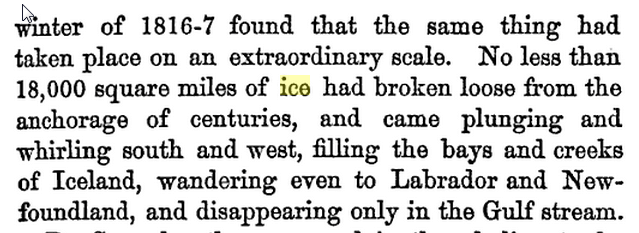In 2010, our friends got hysterical over a 100 square mile block of ice which calved off the Petermann Glacier.
Disrupting the Borg is expensive and time consuming!
Google Search
-
Recent Posts
- “Why Do You Resist?”
- Climate Attribution Model
- Fact Checking NASA
- Fact Checking Grok
- Fact Checking The New York Times
- New Visitech Features
- Ice-Free Arctic By 2014
- Debt-Free US Treasury Forecast
- Analyzing Big City Crime (Part 2)
- Analyzing Big City Crime
- UK Migration Caused By Global Warming
- Climate Attribution In Greece
- “Brown: ’50 days to save world'”
- The Catastrophic Influence of Bovine Methane Emissions on Extraterrestrial Climate Patterns
- Posting On X
- Seventeen Years Of Fun
- The Importance Of Good Tools
- Temperature Shifts At Blue Hill, MA
- CO2²
- Time Of Observation Bias
- Climate Scamming For Profit
- Climate Scamming For Profit
- Back To The Future
- “records going back to 1961”
- Analyzing Rainfall At Asheville
Recent Comments
- John Francis on “Why Do You Resist?”
- Gordon Vigurs on Climate Attribution Model
- Luigi on Climate Attribution Model
- Luigi on “Why Do You Resist?”
- John Francis on “Why Do You Resist?”
- Mike Peinsipp on “Why Do You Resist?”
- Mike Peinsipp on “Why Do You Resist?”
- Mike Peinsipp on “Why Do You Resist?”
- Luigi on “Why Do You Resist?”
- arn on Climate Attribution Model





Dang … I didn’t know they had blow torches in 1271!! How much do you want to bet it was Reggie’s great grand daddy running that bad boy.
I would not bet against that one! 🙂
If sensational headlines drive traffic then Drudge could have a sensational catastrophic climate disruption headline every day using the historical news you have collected. He might even catch some of the pseudo journalist quoting a headline without reading the article to find out it was some event in the past. But a headline of “18,000 square miles of ice breaking away from Greenland” would get lots of views.
It’s very likely a similar event occurred in the early 1880’s but trying to find research on this event is rather hard.
But if you look at ship reports southeast of Newfoundland from the early 1880’s there were hundreds of massive MASSIVE tabletop icebergs documented and large fields of sea-ice surrounding these bergs (likely from the freshwater content of the immediate surrounding ocean). This many large bergs do not come from glacial calving, even on a massive scale. Sometime in the early 1880’s there must’ve been an ice sheet collapse on a rather large scale somewhere in northern Baffin Bay.
Steve, perhaps you’ll have more luck finding info on this…
I should modify that comment to ice shelf, not ice sheet.
If only we had satellites back in the 1920s and 1930s
Reblogged this on The Firewall.
Some good friends of mine had an American Eskimo that also got excited about ice. And he was a pain in the ass too.